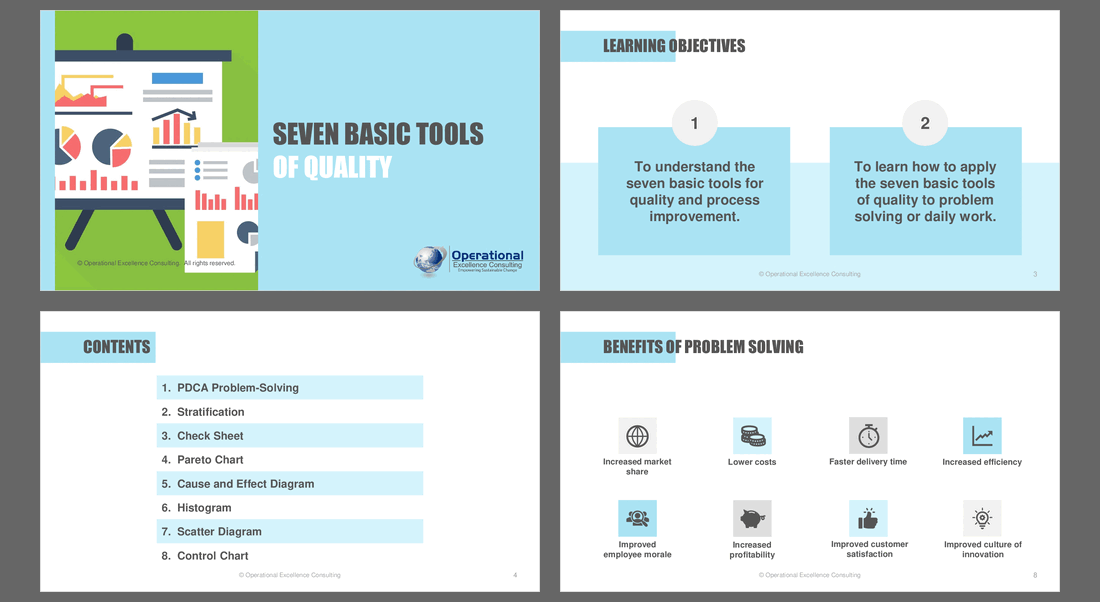Seven Basic Tools of Quality (PowerPoint PPTX Slide Deck)
PowerPoint (PPTX) 90 Slides
BENEFITS OF THIS POWERPOINT DOCUMENT
- Provides procedures and practical tips for using the basic quality tools for problem solving.
- Provides problem solving teams with the ability to see through the murky water so that they can focus on the facts.
- Provides guidance on how to present your data visually to help the audience to better understand the problem.
PPT DESCRIPTION
The Seven Basic Tools of Quality is a designation given to a fixed set of graphical techniques identified as being most helpful in troubleshooting issues related to quality. They are called basic because they are suitable for people with little formal training in statistics and because they can be used to solve the vast majority of quality-related issues.
The Seven Basic Tools of Quality or Seven Basic Quality Control (QC) Tools as they are commonly called, are tools which arrange problem areas, put data into diagrams, surface problem areas and clearly bring up any hidden truth. These tools are not for experts alone but for the use of everyone in their daily work. A problem solving team's successes are dependent on the familiarity and ease with which these tools are used.
The seven basic QC tools are:
1. Check Sheet: Systematically collects and organizes data for analysis.
2. Histogram: Illustrates the distribution of a set of data.
3. Pareto Chart: Identifies and prioritizes the most significant factors contributing to a problem.
4. Cause-and-Effect Diagram (Fishbone/Ishikawa): Identifies potential causes of a problem for further analysis.
5. Scatter Diagram: Examines the relationship between two variables.
6. Control Chart: Monitors and maintains the stability of a process over time.
7. Stratification: Analyzes and categorizes data to identify patterns and variations.
In this training presentation, you will be able to teach employees how to use the tools in their daily work or as part of the structured Plan-Do-Check-Act (PDCA) approach to problem solving. The basic tools can also be applied in A3 problem solving, 8D (Eight Disciplines) problem solving, Yellow/Green Belt Lean Six Sigma projects, Kaizen events, TPM Focused Improvement projects, etc.
LEARNING OBJECTIVES
1. To understand the seven basic tools for quality and process improvement.
2. To learn how to apply the seven basic tools of quality to problem solving or daily work.
CONTENTS
1. PDCA Problem Solving
2. Stratification
3. Check Sheet
4. Control Chart
5. Pareto Chart
6. Cause & Effect Diagram
7. Histogram
8. Scatter Diagram
Got a question about the product? Email us at support@flevy.com or ask the author directly by using the "Ask the Author a Question" form. If you cannot view the preview above this document description, go here to view the large preview instead.
Source: Seven Basic Tools of Quality PowerPoint (PPTX) Presentation Slide Deck, Operational Excellence Consulting
This document is available as part of the following discounted bundle(s):
Save %!
Basic & Advanced Tools of Quality ("QC Tools")
This bundle contains 2 total documents. See all the documents to the right.









